How to sell on Depop: from starting an account to optimising your listings
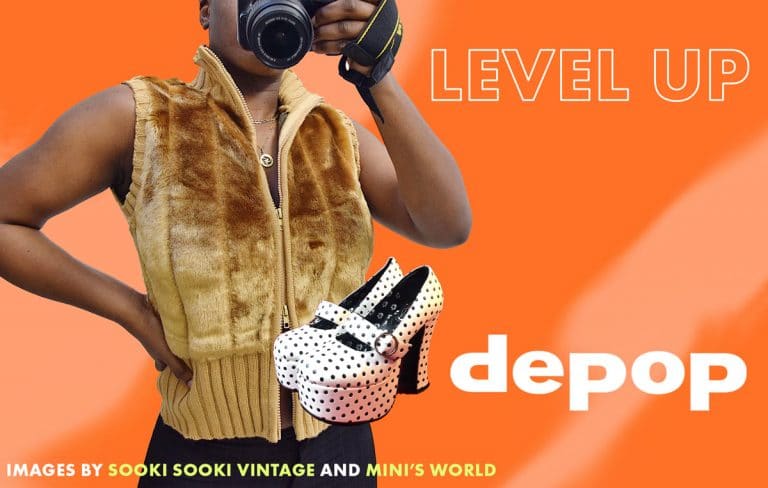
So you want to learn exactly how to sell on Depop? You’ve come to the right place! From the benefits of selling on the app and how to optimise your posts’ captions to the best ways of packaging your items, we’ll show you how to become a top seller by covering absolutely everything you need to know. Whether you’re simply looking to sell old clothes to clear your space or dreaming of launching your own brand—either way, there are many ways to make some serious cash on Depop, if that’s what you’re aiming for! Let’s get started, shall we?
Sustainability is the word that has been on everyone’s lips over the last few years and along with it came the rise of online marketplaces aimed at gen Zers. Forget about eBay and its confusing auction bidding process, the new generation was in dire need of a fashion marketplace that was not only simple, community-based and diverse but also sustainable—and it got what it wanted. In 2011, Depop was first launched.
If, like me, you’ve always struggled with a self-inflicted overflow of clothes and accessories, then you probably know of Depop and other apps like Vinted or Vestiaire Collective. You might have even downloaded one of them one day, had a quick test of how it functioned in order to gauge whether selling some of your old clothes on it was actually worth your time, but ended up deleting the app pretty quickly after deciding that it probably wasn’t.
Or perhaps you went further than that and actually uploaded a few pictures of that old dress that you personally can’t see yourself wearing anymore but still has some charm, only to never receive any likes or followers, let alone sell anything. If any of those assumptions sound familiar, or if you’re simply looking to optimise your already existing Depop account, then this How To is perfect for you. First things first, here’s a short introduction to the app and its many wonders.
What is Depop?
Just like eBay, Depop was created as an online fashion marketplace first, one where you can buy and sell your unwanted clothes. Unlike its predecessor, Depop is an app-based service, which means that although you can also access it on your laptop, it is mostly used from a user’s phone, which makes it easier and quicker to sell or buy items on it with a tap of a finger.
The app’s interface is similar to that of Instagram, not only because all apps seem to like copying the social media tycoon, but also because the characteristics of Instagram and its design are crucial aspects, especially for gen Zers. Instagram’s interface is simple: it has a few main icons, a handful of shortcuts, and consists mostly of images. As “the fashion marketplace app where the next generation come to discover unique items,” Depop knew it had to fulfil gen Zers’ need for simplicity.
After all, the app’s Unique Selling Point (USP) lies in the fact that it makes selling quick and easy—and it really does, but sometimes when starting out on the app, it can be hard to imagine how others are selling big time and, as a result, see the actual benefits of selling on Depop.
View this post on Instagram
The benefits of selling on Depop
If, somehow, you’re still not fully convinced of the benefits there are to using Depop for selling your unworn but loved clothes, then look at things this way: We are all over consuming—blame it on capitalism—which means that only a handful of people can proudly say that they don’t have personal belongings they wish they could get rid of. But, while your yearly trip to the nearest charity shop helps you both clear your closet and your conscience, you probably still hold on to a few pieces of clothing that are too sentimental (or pricey) to let go of. You want to make sure that whoever gets it will make good use of it (or pay the price you think it deserves). I feel you, trust me, I would be the last one to judge.
Keep in mind that while Depop is mostly known for its second-hand gems, it is also one of the best marketplaces for independent sellers. By that, I mean if you’ve got a collection of handmade products that you would like to start selling, Depop’s app might be a perfect fit for you too! Just like on Etsy, many small designers sell their items on Depop, while others repurpose vintage garments into cool, upcycled pieces. In other words, Depop has way more to offer than what you might think at first.
Still not 100 per cent convinced? Here are 9 benefits of selling items on Depop instead of another online marketplace.

1. Easy-to-use (even for newbies)
As stated above, Depop’s USP is its simplicity which allows almost anyone to sell their items on the app without any difficulty. Compared to eBay’s old school interface and its confusing mobile version, Depop looks like it was made with kids in mind—and that’s positive, you want to make your life easier, not harder.
2. Community-based
Not only does Depop have a highly engaged community, but it also feels so familiar because of its social platform similarities. On the app, you have a profile with a picture, a bio, followers and followings—just like on Instagram. Depop’s feed even looks like Instagram’s. And although eBay also offers sellers the opportunity to have a picture and a short bio, eBay buyers couldn’t care less about who they’re buying from.
On Depop the contrary is true, your personality or your sense of style may be the very reason customers are buying your items and following your account. This idea is founded on the fact that your potential customers will know what to expect from you, much like any other physical shop.
3. Mobile-first
I’ve said it before, but let me reiterate this for the people at the back: Depop’s app is simply the best when it comes to listing (and therefore selling) items. It’s straightforward and sleek, whereas eBay is pretty outdated. With Depop, you can sell clothes, even when you’re on the go.
4. It has some impressive subcultures
Because Depop is a community-based platform, it presents itself as a welcoming platform for any type of seller as well as buyer. This means that you might end up finding pockets where people are hunting for niche-interest products. As a seller, this can be helpful if you’re trying to sell very specific items. As a buyer, Depop is great if you’re into some obscure fashion trend that can’t easily be found on other online marketplaces.
5. You just won’t get the same anywhere else
Many buyers and sellers steer clear of eBay because sellers on there are ‘faceless’. In other words, when buying something on eBay, you have no way of knowing who you’re buying from, which can sometimes result in scams, whereas on Depop, you can find out anything you want from sellers that have a transparent bio, and you can ask questions. On top of that, Depop’s refund system is seamless, so even if you do end up getting scammed (although the chances of this happening are slim), you’ll get your money back in no time!
6. Depop users are friendlier
It may sound silly, but it is a true benefit of the app. While eBay is more established because of its longtime run as an online marketplace, a lot of it is very serious, including its users. If you want just the right mix between eBay’s legally binding bids and sanctions and Facebook’s local group, then Depop is it.
7. Great seller offers
Depop regularly runs seller offers that reduce the fees to list products. This means that if you’ve got a big inventory, those offers are highly beneficial to cut extra costs. If you’re a buyer, the app also offers some seasonal offers and pushes sellers to discount some items before specific holidays.
8. Followers
Because Depop works just like Instagram, it’s very easy to contact customers who follow you, in case you need to check something with them. This allows you to market your inventory by following, liking and generally immersing yourself in the Depop community.
9. Influencers
When a digital platform attracts young fashion enthusiast users, influencers and celebrities usually follow them on the specific app. That’s what happened with Instagram and TikTok, and it also did on Depop. Although the app will probably never gain as much traffic as eBay, it offers sellers the next best thing: a targeted audience. If you have something to sell, find influencers that represent that style and get in with that crowd—the rest will follow. Interaction with other profiles should lead to your own account being noticed.
How to sell on Depop
Now that we’ve exposed the reasons why there is more to gain from using Depop than to lose, it’s time to get rid of that pile of clothes you’ve pushed into a corner and cover the logistics of actually selling items on the app. There are two main things you need to know about before you start making some money: Depop’s selling and listing fees.
Depop fees
Once you’ve sold an item, Depop will automatically charge a 10% fee on the sale price that you’ve personally set, including the shipping costs that you can also manually set depending on the size of the item you’ll be sending. This fee will be taken from your PayPal account, which will be connected to your Depop account, or any card you have linked to your Depop account.
On top of that, there’s a PayPal transaction fee of 2.9% + $0.30 in the US and 2.9% + £0.30 in the UK. It usually doesn’t equal to much, but keep this in mind before your first sell.
Depop listing fees
Listing an item on Depop, on the other hand, is completely free, unlike other big online marketplaces. This means that the flat 10% selling fee discussed just above is charged only when you sell an item!
Now that you’re aware of all that, let’s get you up and running for your first sell on Depop. All you have to do is to create a free Depop account, list your items, deliver your products, and get paid. Let us take you through a step-by-step process to start selling on Depop.
1. How to create an account on Depop
First things first, you’ll need to create your Depop account after downloading the app on your phone—you can also do this on Depop’s website, but because you’ll probably mostly use the mobile app, you might as well start there.
You can either decide to connect either your Facebook account or your Apple ID to your new Depop account or simply fill in the information needed yourself. If you do the latter, Depop will ask you for your first name, last name, email address, your Depop username and password as well as your location. You’ll also need to read Depop’s terms and conditions and precise your preferred currency.
2. How to connect your PayPal to your new Depop account
Once you’re all done setting your new Depop account, you have to connect your PayPal account in order to start receiving payments of your sold items or start buying items on the app.
Because Depop doesn’t currently have its own payment system, all purchases go through PayPal, whether the buyer payment is made with PayPal balance or Debit / Credit card. That’s why, if you want to sell on the app, you will need a PayPal account to connect it to.
To connect your PayPal account, open your Depop app and tap on the ‘Profile’ icon located at the bottom right of your mobile screen. We’ve circled it in red in the image below:
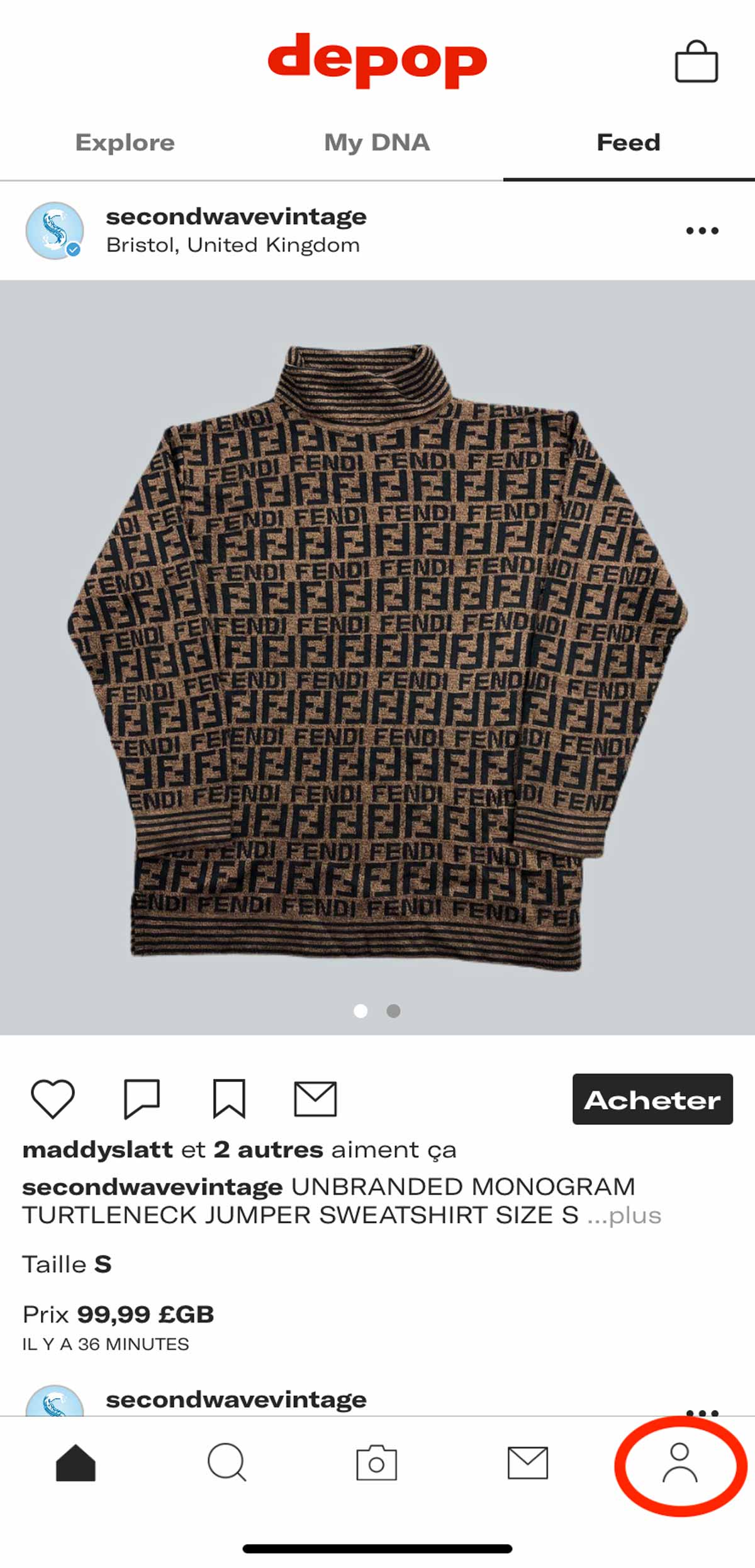
Once you’ve clicked on it, you will end up on your newly created profile. In the top right corner, you should see a ‘Settings’ icon that looks like a grinding wheel. Click on it to access more information on your account, then click on ‘Preferences’.
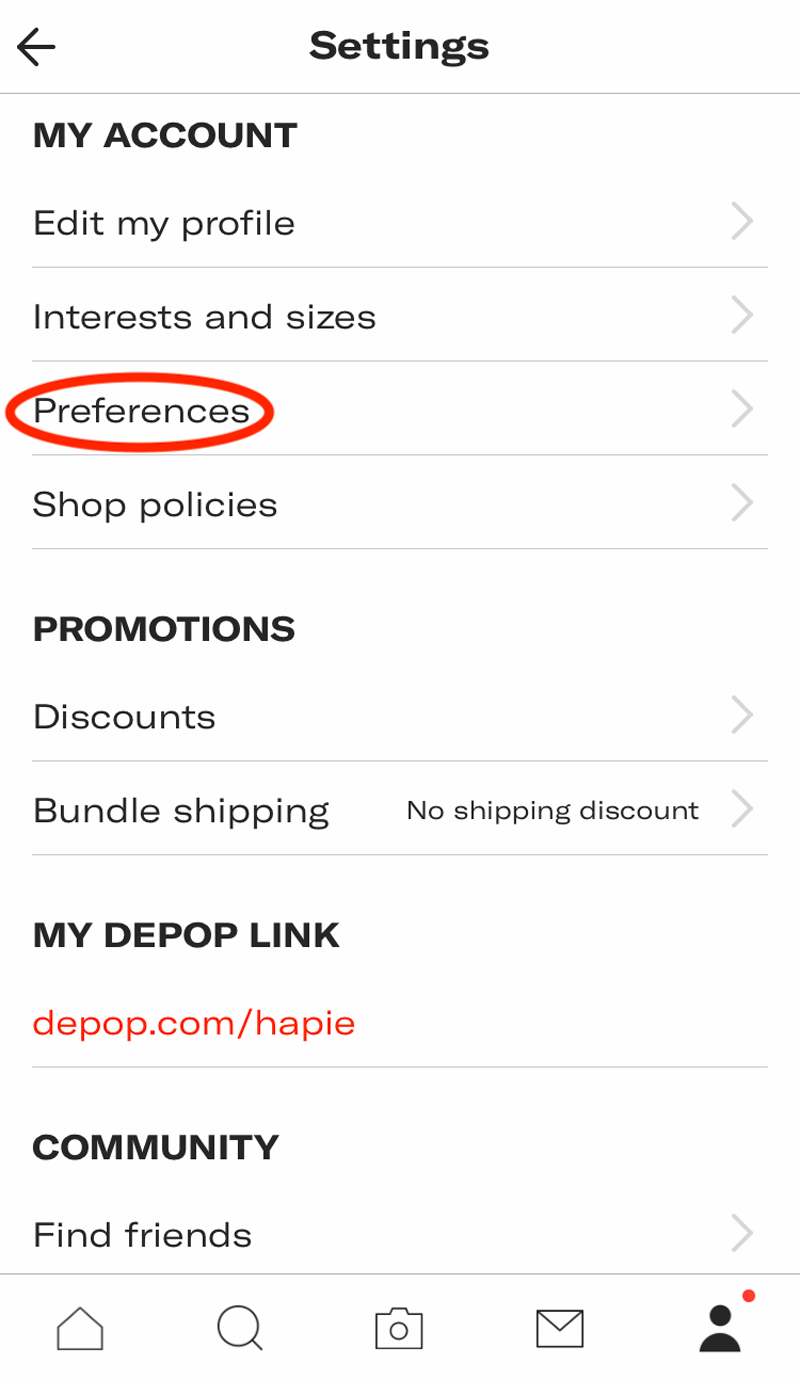
There, you should see that your PayPal account is not connected to the app yet.
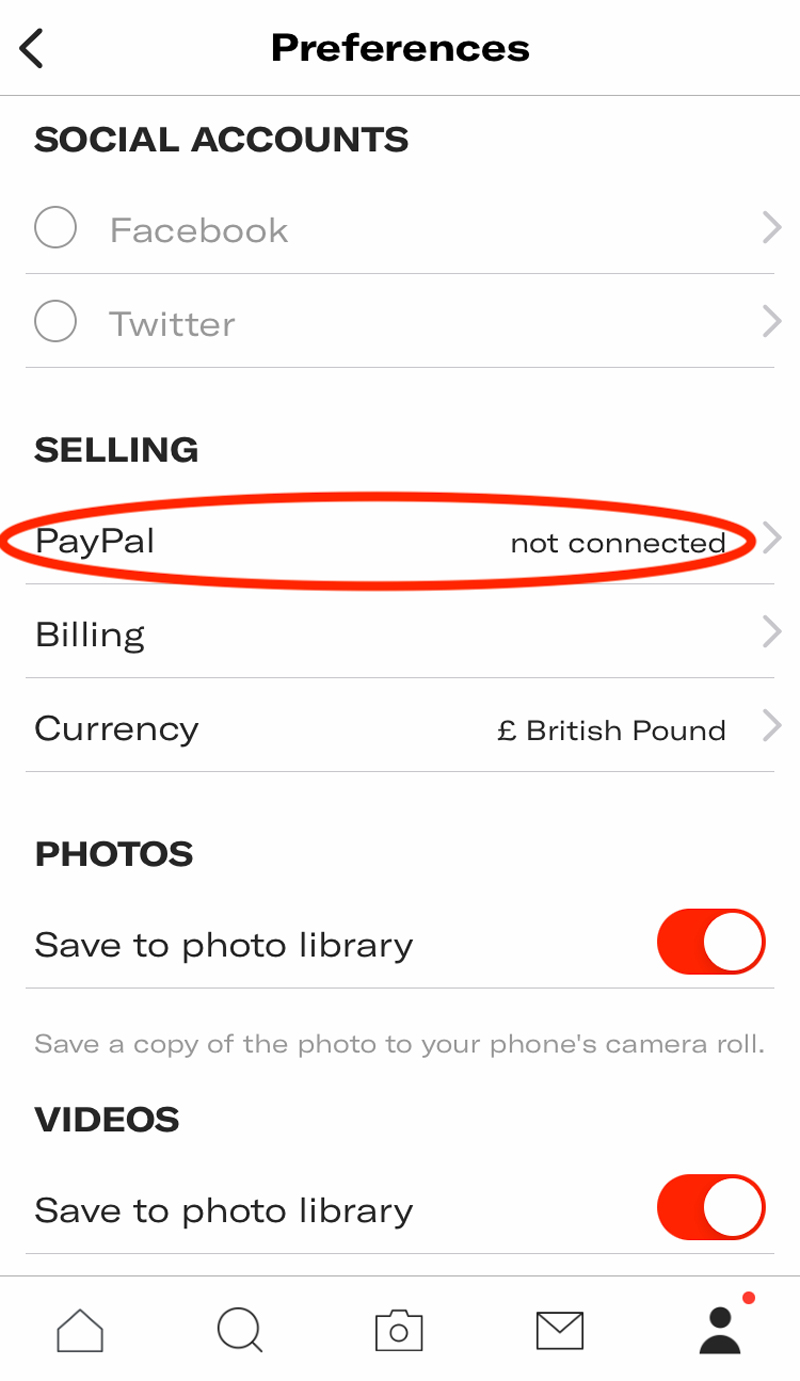
Simply tap on it, select ‘Connect PayPal’ and log into your PayPal account. Once that’s all done, your PayPal account will be connected to your Depop profile and you’ll now be able to get paid when you start selling items!
3. How to set up your shop on Depop
We’ll go into more detail on how to optimise an item’s pictures shortly but until then, let’s have a look at how exactly you can set up your shop. Go on your profile, and start modifying it to add more information about yourself. Add a photo or a logo that will represent you as a seller or your brand and tap on ‘Next’. Write a short bio about your shop and what you’re selling then tap on ‘Next’. Link your profile to your other social media accounts and tap on ‘Next’. Enter your first name, last name, billing address, and tap on ‘Next’ again.
After you’ve completed those steps, your final step is to add four images and one video of your first item—while the video is optional, we recommend that you upload one if you get the time. This will give your buyers a better view of the product, and an incentive to buy it. You’ll also need to add a description, some hashtags, your location, a relevant category, some shipping information, and the price of the product you’ve chosen. When finished, all you have to do is to tap on ‘Post listing’.
Listing on Depop is, as we mentioned it above, pretty straightforward. However, listing is an essential part of your image as a seller, so you’ll want to always get it right. You can either open your app and tap on the ‘Camera’ icon at the bottom centre of your home screen to take a picture straight away or use pictures that you’ve already taken beforehand. While both work the same way, we advise you spend a bit of time on taking the right pictures to really showcase your items in the best light you can. After all, if your pictures look bad, buyers probably won’t be interested in buying the items you’re trying to sell. That’s why optimising your listing page is really important.
How to optimise your Depop listings
Your listing page is where potential customers view your products. Optimising your listing pages can have a huge impact on your sales, so make sure you follow these tips when adding listings to your Depop store.
1. Take good pictures and videos of your items
Said like that, it might sound time-consuming, however, making an effort when it comes to your listing process is the best way to start selling your items, and for a good price too! While having good clothes to sell in the first place is always a bonus, some good pictures and a nice video can truly improve the quality of a garment. All you need to do is keep a few things in mind when taking pictures and videos of them.
For one specific item, you can only add four pictures and one optional video maximum, so try to use all these media to your advantage. If you’re happy modelling your items, then try to style them with some other cool pieces that you know will uplift the main item you’re selling. Make sure you’re showing every angle of your item, and do not try to hide any stains or holes, simply mention them in the description of your item and try to take some ‘flattering’ pictures of it too.
Take your pictures in natural sunlight in nice settings—no one wants to see your dirty bedroom in the background. Instead, you can even try to ‘stage’ scenes using some of your favourite objects for example. Have a look at how other Depop sellers optimise their listing pictures:
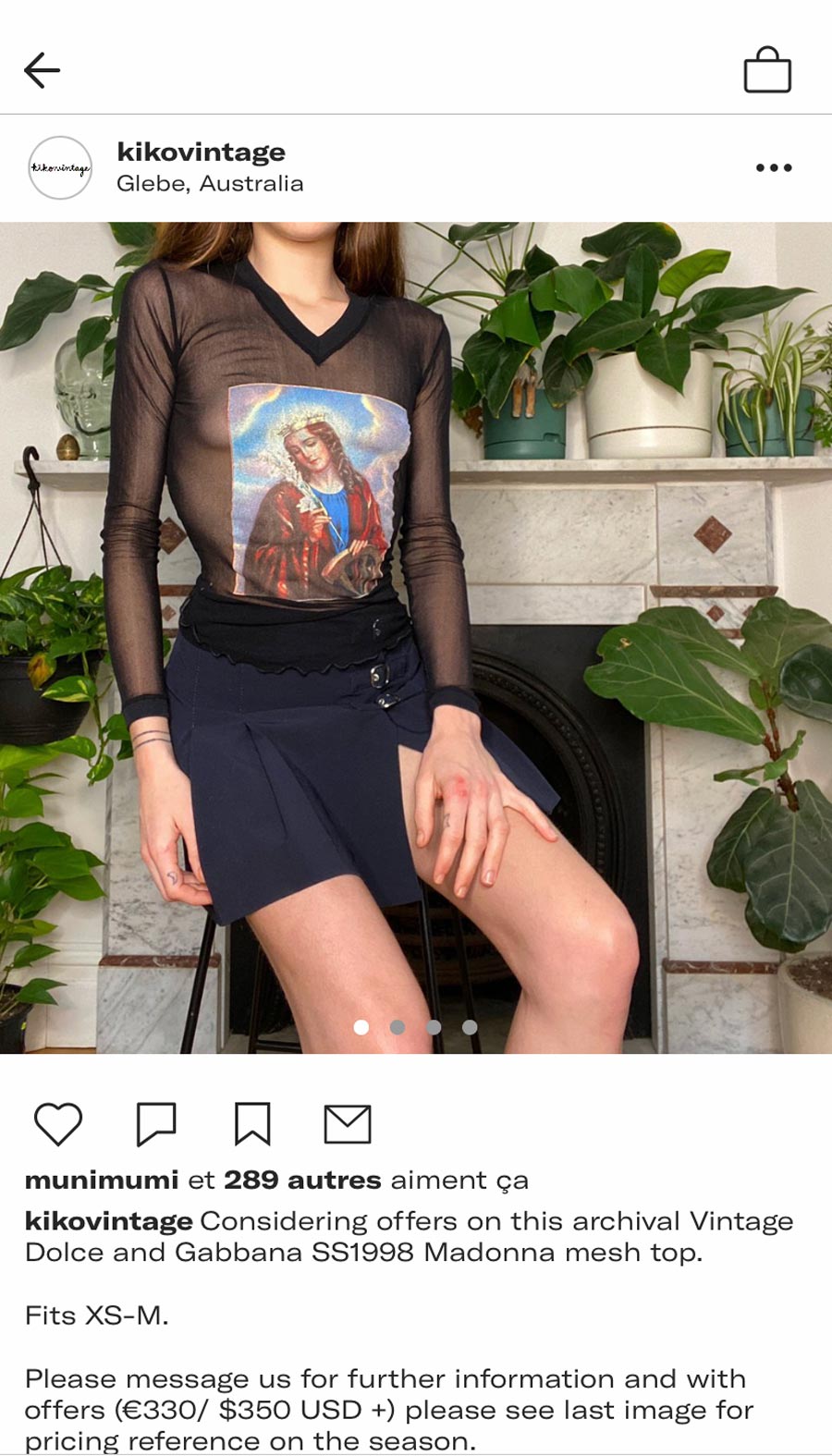
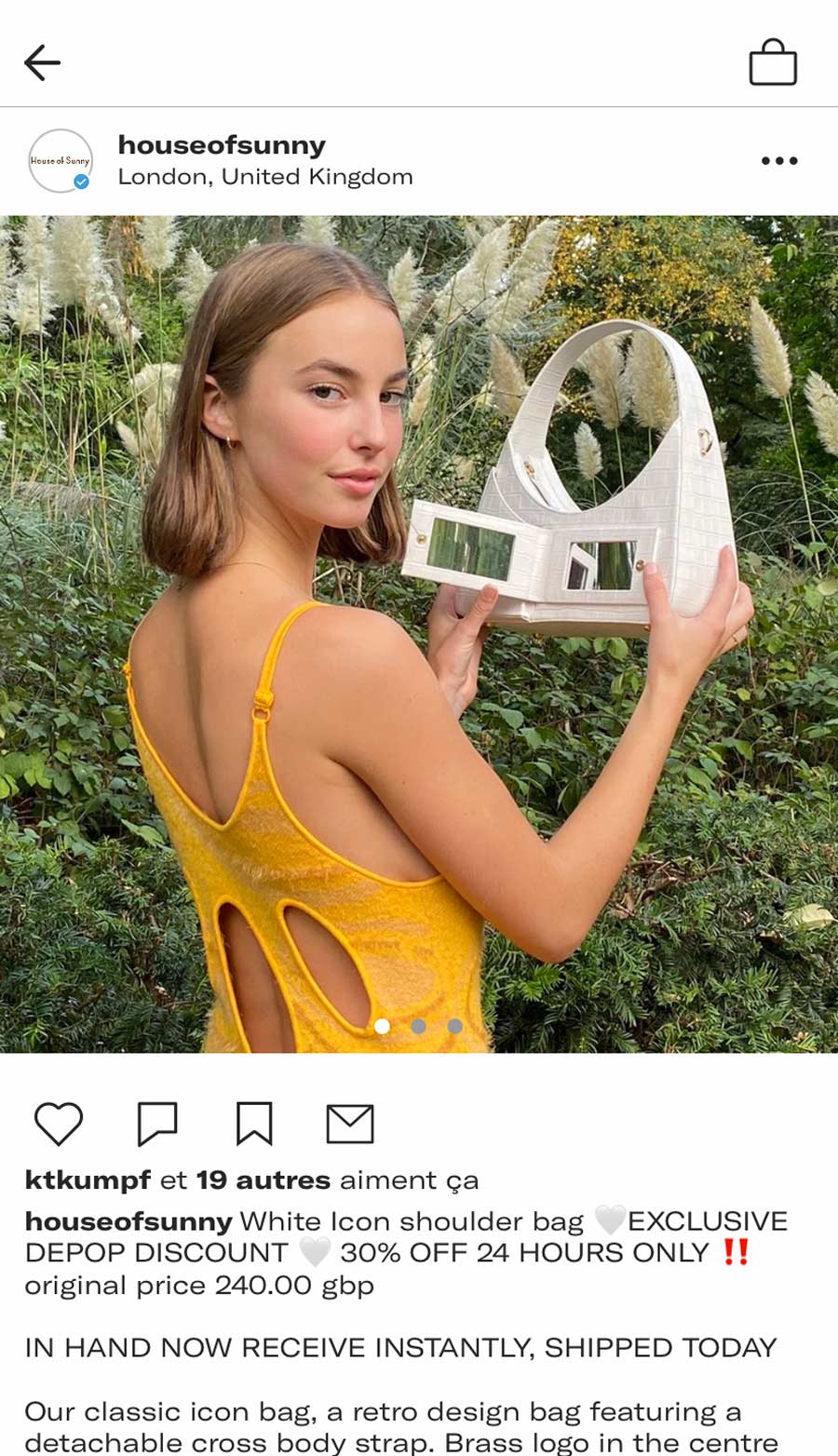
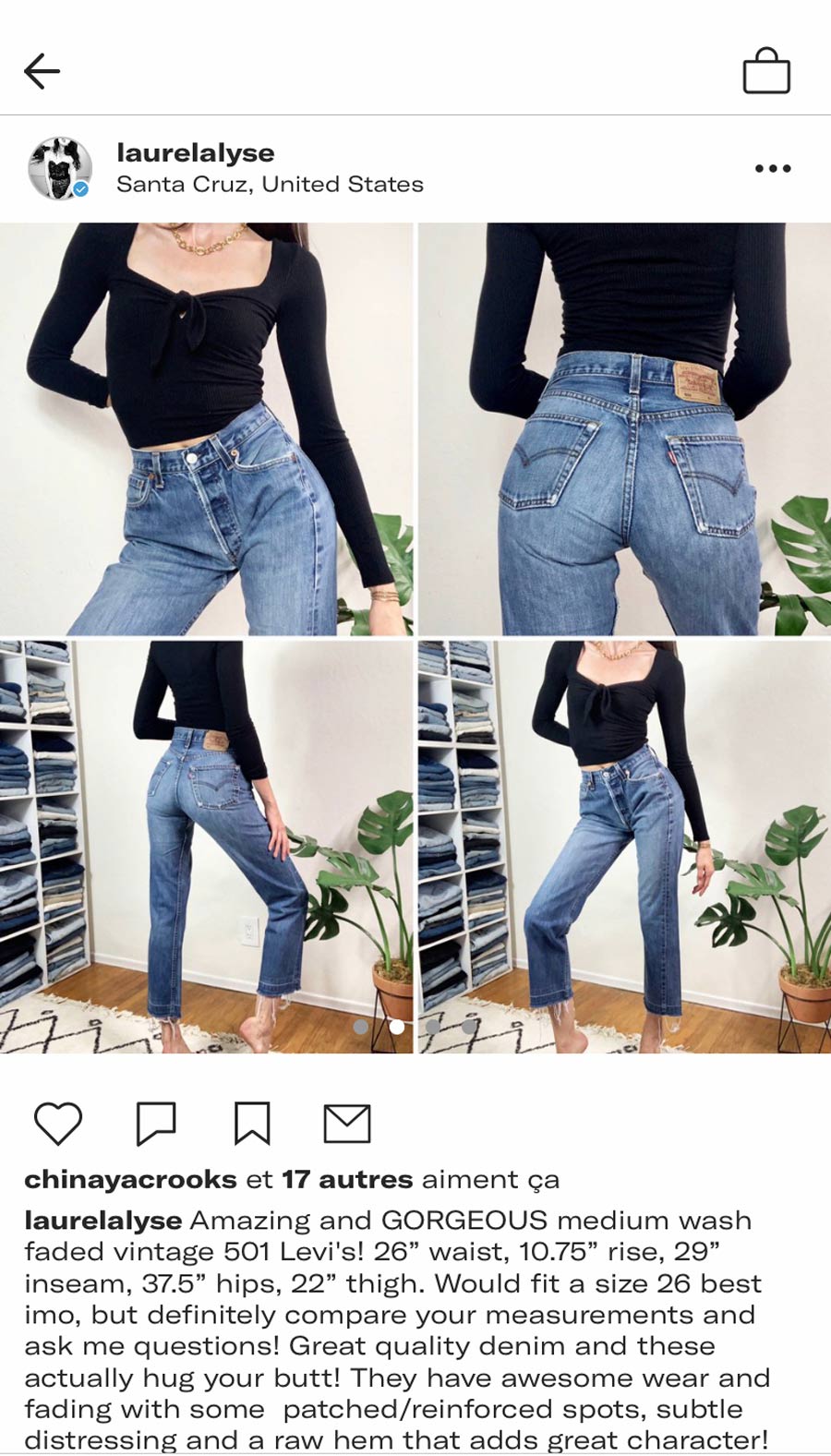
In the first and second examples, you can see that the seller used her plants and a stool as a nice way to create a beautiful environment around her main piece. In the third example, the seller went as far as to create a montage of different angles of her item in order to really show what she’s selling.
Although you don’t necessarily have to add a video, it can be useful as an extra help that gives Depop shoppers a better idea of how your product looks in action.
2. Write product descriptions that sell
If you look at the captions above, you’ll soon figure out that detail is key! When writing your own product descriptions, don’t be shy, try to sell your item by using positive adjectives such as ‘amazing’, ‘gorgeous’, ‘cute’. Then, take the time to add proper measurements of the garment to avoid users from messaging you for more information, as well as the quality of the item you’re listing.
An effective product description will convince potential customers to click the ‘Buy now’ button. Before writing your descriptions, have a think about your buyer personas. Are they okay with a familiar tone of voice? Are they quite young? What kind of budget are they willing to spend on one item? What information are they expecting from you? This should dictate the way you first approach your product descriptions.
Once you’re ready to get writing, use short, descriptive sentences that highlight the key features of your item. To finish it off beautifully, include product keywords to optimise for search so that people will find your listing. You can do that by inserting hashtags in your listing, from the brand of your item to a more global description of it. For example, if you’re selling a pink mini skirt you can include hashtags such as #miniskirt and #pinkminiskirt. If your skirt is from Topshop, add this information too! You could write #Topshopskirt or #Topshopminiskirt for example.
Don’t forget to mention defaults such as scratches, stains or holes. Be a trustworthy seller, because if you decide to hide something from a buyer, they can open a dispute against you, which may result in you having to give them a refund. Depop has its very own page to guide buyers on how to open a dispute against a seller if they received a product not as described. Keep in mind that once you’ve sold something to a buyer, both you and them have the possibility to leave a review visible to any other Depop user, so don’t piss anyone off, it’s just not worth it.
3. Describe the item fully
When listing an item on Depop, underneath the product’s description you will see a few more categories that need to be filled in. From the item’s size and its brand to whether it is second-hand or completely new as well as extra colour tags, make sure you fill as much of these categories as you possibly can. Remember, the more details the better!
4. Price an item fairly
Pricing can be one of the trickier aspects of listing an item. It can have a big impact on whether or not people decide to buy your items, even if you’ve uploaded some top-quality pictures and written a detailed product description.
Before pricing an item, try to calculate the overall cost, including shipping and the retail price of your item. Don’t price your items too low because it could have a negative impact on your profits. Alternatively, don’t price too high either because it can also dissuade customers from buying your product.
If you think that you have an item which is already being sold by other sellers on Depop, search for similar listings to see what they sold for and try to price your item for a slightly cheaper price than the rest. This can give your listing an edge over competitors.
5. Shipping your items
When it comes to your shipping fee, you can manually edit it every time you upload an item or set a global price for all of them. Try not to set it too high, be realistic, but remember that you can also make a small profit from it. By arranging your own shipping, you’ll need to consider the price of packaging as well as the shipping label.
To keep proof of postage, send the item to the address on the in-app receipt and put in the package’s tracking number once it’s sent. In case something goes wrong, you’re protected by PayPal’s Seller Protection.





